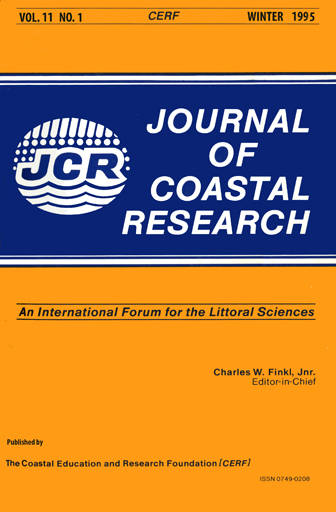Eddy Formation Behind a Coastal Headland
Keywords:
Eddies, topographic effects, rotating flows, vorticity, coastal flows, capes, headlandsAbstract
The two-dimensional steady flow of a coastal flow past a headland has been considered. Results from a numerical model are presented to show the transient and steady state flow structures downstream of the headland , for a range of external parameters. It is demonstrated that the flows are of two types. The first type, which is characterised by low values of the bottom friction parameter (M) and low values of the Froude number (Fr), shows deflection of the incident flow around the cape tip and attachment of the flow to the rear face of the headland . For higher values of M and Fr , separation of the flow occurs at the tip of the headland and an attached eddy is genera ted downstream. Eddy shedding is not observed. The results show that the size of the attached eddy and the vorticity distribution within it are controlled strongly by the value of M, though the maximum vorticity within the eddy depends only upon the incident flow velocity U and the horizontal dimension L of the obstruct ion. Evidence of oscillatory behaviour is detected during the t ransient adjustment phase of flow development, with the period of the oscillations being of the same order as vortex shedding periods for the same geometry.


